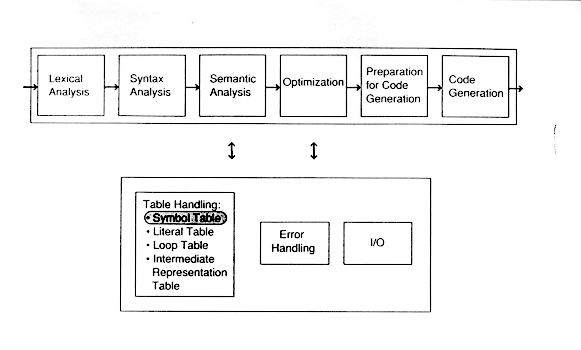

It is the semantic analysis phase which creates the symbol table because it is not until the semantic analysis phase that enough information is known about a name to describe it.
Many compilers set up a table at lexical analysis time for the various variables in the program, and fill in information about the symbol later during semantic analysis when more information about the variable is known. A classic example comes from FORTRAN and Ada where the same syntax is used to refer to functions and arrays. In these languages, F(2) might refer to an element F2 of an array F or the value of function F computed using argument 2. For the lexical analyzer to make the distinction, some syntactic and semantic analysis would have to be added.
Code generation uses the symbol table to output assembler directives of the appropriate size and type.
It is important to distinguish between a symbol and an identifier since the same identifier may represent more than one name. For example, in FORTRAN, one can write:
COMMON /X/ X
F(X) = X + 1
The single identifier X represents three names:

The picture implies that there is an outer block (or procedure) with a declaration of x and two inner blocks (or procedures) each with its own declaration of x; thus, the single identifier x again represents three different names or symbols.
Symbol Tables provide the following information:
 Given an identifier, which
name is it?
Given an identifier, which
name is it?
 What information is to be associated with the name?
What information is to be associated with the name?
 How do we access this information>
How do we access this information>
